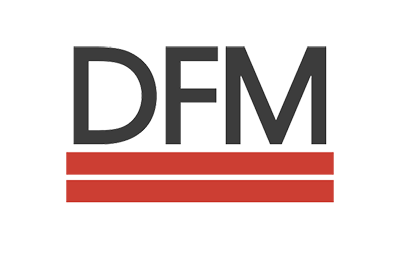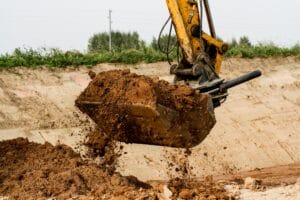Stormwater management is the secret behind functional housing developments. It creates maneuverable paths that make states, cities, and residences livable.
Unfortunately, stormwater management cannot happen without appropriate scientific principles and legal guidelines. That’s why it relies on proven best management practices or BMPs.
Stormwater inspection uses best management practices to identify potential sources of point and nonpoint pollution. Vulnerable areas include high-risk stockpiles as well as storm drains. Stormwater best management practices ensure that repairs are made, and guarantee that control measures are there to mitigate unforeseen risks.
In understanding stormwater management, it’s important to note that inspections must occur regularly to ensure the proper flow of stormwater and prevent floods. Stormwater inspections raise awareness around compliance and improve corporate partnership toward compliance.
At DFM Development Services, we specialize in the following types of stormwater inspections:
Stormwater Pollution Prevention Plan (SWPPP)
The stormwater pollution prevention plan ensures that construction sites follow established stormwater pollution prevention guidelines. The goal of the SWPPP is to rigorously check and assess compliance with pollution prevention regulations and controls. The US Environmental Protection Agency EPA requires construction operators to follow the best practices in stormwater management.
We help our clients understand and comply with all federal, state, and local environmental regulations. Our team understands the numerous environmental regulations surrounding land development and construction. Therefore, we aim to provide professional compliance guidance.
An important part of our expertise is stormwater pollution prevention plan development. We guide constructors and real estate developers through the process of developing and complying with established stormwater pollution prevention plans. We are familiar with stormwater pollution and work closely with contractors to ensure they don’t fall prey to existing loopholes.
Virginia Stormwater Prevention Plan
Different jurisdictions have different stormwater pollution prevention rules and guidelines. For instance, Virginia stormwater pollution prevention rules and guidelines as provided by the Virginia Stormwater Management Program (VSMP) Regulation—otherwise referred to as the Virginia Administrative Code—is different from Washington D.C. or even Maryland.
The Virginia Stormwater Management Framework encompasses a range of requirements:
Virginia Stormwater Pollution Prevention Requirements:
- The stormwater pollution plan shall capture erosion and sediment control plans as stipulated in the Virginia Pollution and Sediment Control Law VESCP.
- A stormwater management plan that’s consistent with the Virginia Stormwater Management Act. Prior to any land disturbance, this plan has to be approved by the Virginia Stormwater Management Plan authorities.
- A pollution prevention plan that identifies potential sources of discharges and designs control measures intended to mitigate pollution.
- The stormwater management plan shall be revised and amended whenever there’s a change in the design, construction, and maintenance of projects that have a significant impact on the nature and direction of discharge and flow.
The Virginia Erosion and Sediment Control Law VESCP and the Virginia Stormwater Management Program (VSMP) Regulation are two laws governing stormwater pollution discharge. The laws enshrined in the two documents are comparatively different from those of Maryland and Washington, D.C.
D.C. Stormwater Control Standards
The D.C. stormwater control requirements require that large construction projects shall effectively and accordingly manage post-construction stormwater runoffs, including incorporating such components as permeable pavements, cisterns, Bioretention facilities, and planter boxes.
Key requirements in the District include:
- The District of Columbia stormwater control standards applies to projects that disturb 5,000 square feet or greater of soil or a building that covers 5,000 square feet or greater.
- The requirements further stipulate that private and public spaces, including streets, sidewalks, lawns, and buildings must be designed to reduce the overall amount of stormwater. This shall be done through DDOE-approved practices, including beneficial reuse, infiltration, and evapotranspiration practices.
- Improving the quality of stormwater by filtering stormwater from the 95th percentile storm flowing from a project
- Achieve the desired levels of stormwater control using DDOE-approved methods: vegetative cover, groundwater protection, collection, and re-use, as well as other onsite design methods.
- Where possible, employ DDOE-approved low-impact stormwater control technologies.
- Employ DDOE-approved pest management protocols to restrict the use of fertilizer, pesticides, and herbicides.
- Construct controls to prevent infiltration of stormwater into contaminated soil or groundwater.
- Guarantee contaminated groundwater or soils is remediated as part of development activities or long-term control measures are instituted.
- Certify that groundwater discharges from the project site entering sanitary sewers meet water quality standards set by the District of Columbia Water and Sewer Authority.
Maryland Stormwater Management Guidelines
The Maryland Department of the Environment manages stormwater and runoffs. The Maryland Department of the Environment designs, deploys, and maintains stormwater management programs on behalf of the state.
The Department works to develop stormwater management programs for new development and redevelopment projects that require effective stormwater management solutions. They provide a design guide that takes developers through the step-by-step process of developing a new project or renovating a substantial development. They also provide design criteria and performance standards for stormwater best practices.
Stormwater Facility Construction Inspection
There’s an old adage, “things don’t go wrong; they start wrong.” This saying is true for most things, including construction and land development. Stormwater facility inspection is the systematic process of evaluating whether stormwater facilities meet design standards and function as intended. Stormwater facility construction inspection assists developers, contractors, and property owners in following the best management practices in stormwater management.
The benefits of stormwater facility construction inspections include:
- Equipment and site inspections help to identify problems, amend and provide solutions.
- Stormwater facility construction inspections lead to fewer injuries and related costs.
- Ensure compliance with construction codes and environmental regulations and enjoyment of liability protection.
- Fixing technical issues before they arise or escalate.
- Ensures prolonged equipment and facility life, leading to massive cost savings.
Stormwater facility inspections provide insight into construction requirements, helping contractors conform to the ever-changing regulatory landscape.
Post-Construction Stormwater Facility Inspections
The post-construction stormwater inspection entails all the processes and activities involved to hand over the project to the client: individual, business, organization, or institution. Post-construction stormwater facility inspection may include completing punch list items, walkthroughs, cleaning, and more.
The post-construction stormwater inspection provides insight and visibility into technical problems. In addition, clients enjoy free maintenance over a specified period. And most importantly, post-construction inspections ensure the safety and sustainability of projects throughout their life cycles.
Best Management Practices or BMPs in Stormwater Facility Inspections
At DFM Development Services, we inspect all manner of best management practices, including:
- Storm drain inlet inspection
- Stabilized construction exit
- Sediment barrier/silt fence
- Diversion ditches
- Mulches, mats, blankets
- Sediment trap
- Vegetative stabilization
- Bioretention facilities
- Rain Gardens
- Swales
- Vaults/Chambers
- Infiltration Trenches
Importance of Stormwater Inspections
Water contamination has far-reaching implications on individuals, families, and communities. Even slight contamination can turn a flourishing and prosperous neighborhood into a ghost town. Water contamination can affect thousands of individuals and families and lead to major health ramifications.
Stormwater inspections, especially enforcing stormwater pollution prevention plans, achieve the following benefits:
- Helps to control sediment, ensuring proper flow of surface water.
- It provides temporary and permanent cover to construction sites through the following: temporary seeding, soil binders, matrices, mulches, blankets, and mats.
- Solid waste and hazardous material protection.
- Inlet protection.
- Ensures proper watering, preventing concrete washouts.
By working with licensed professionals, you’re assured of corrective solutions in your stormwater project. You enjoy professional feedback, timely approvals, and technical assistance. Inspection and follow-ups are critical processes in stormwater management, owing to the disastrous nature of rainstorms and floods.
DFM Development Services, LLC – Inspection, Oversight, and Compliance
Stormwater compliance inspections are crucial in all phases of construction projects. With this recognition, this post identifies that stormwater inspections have far-reaching implications—preserving water quality, protecting public health and aiding contractors with installation, and limiting the potential for flood and erosion damage.
New evidence even suggests that stormwater inspections mitigate threats to water quality, ensuring access to safe drinking water. Compliance with established regulations ensures the safety of surface runoffs and underground water.
Contact DFM Development Services, LLC for quality and professional stormwater inspections before, during, and after your next project.




